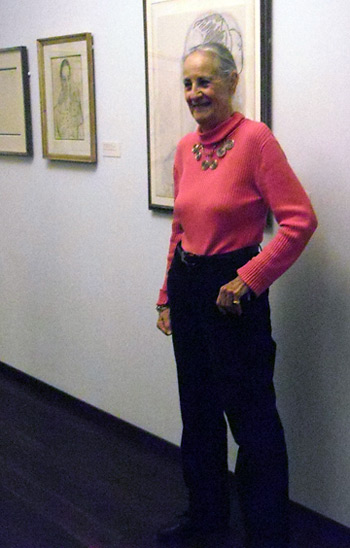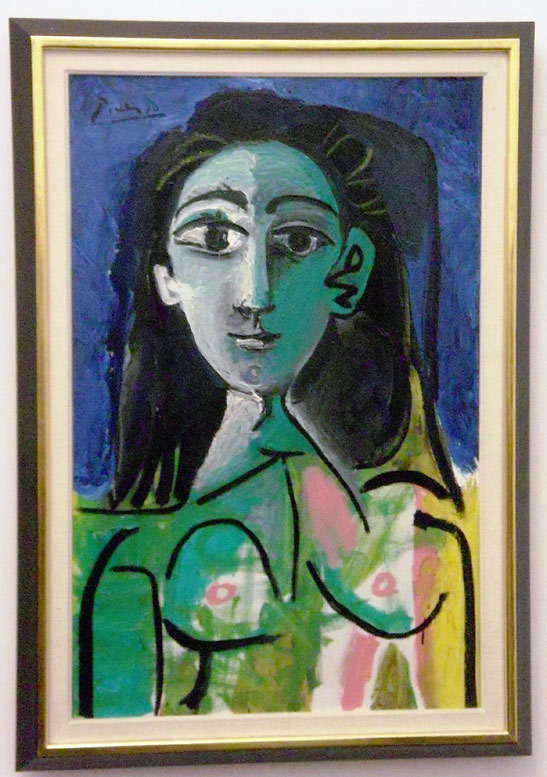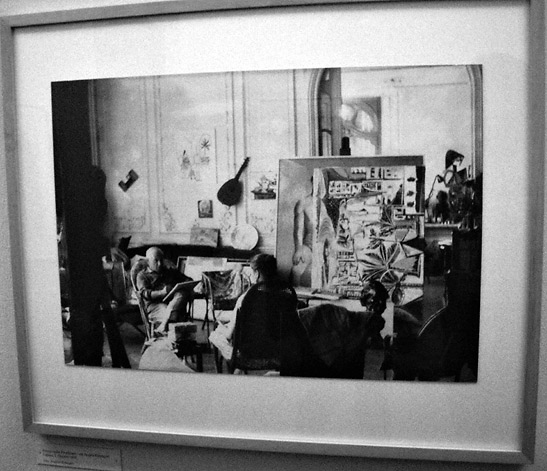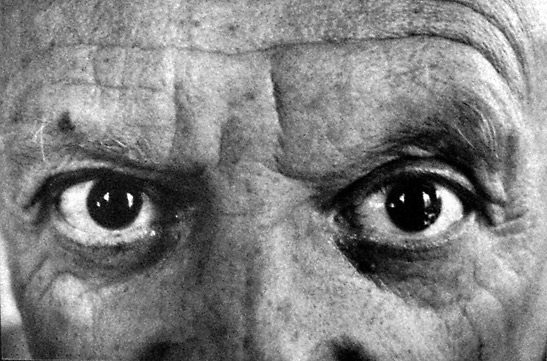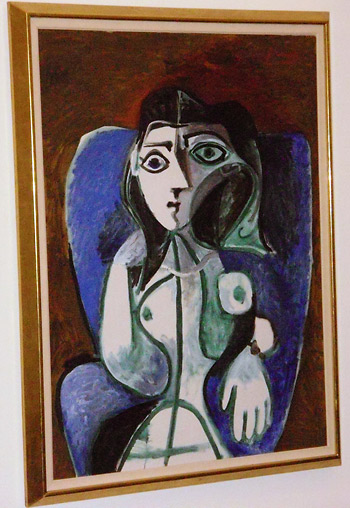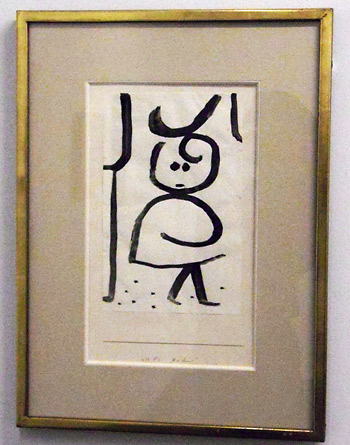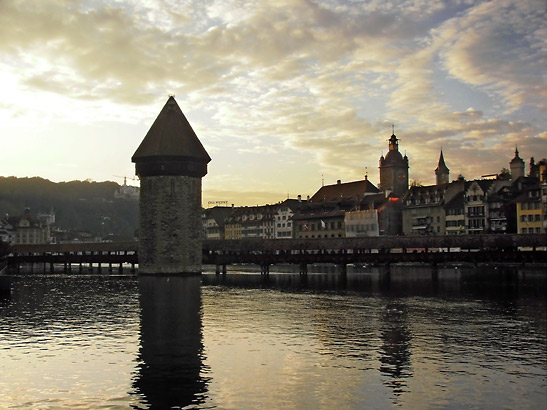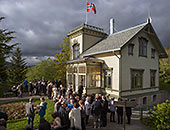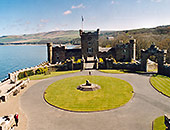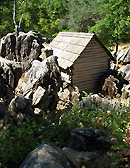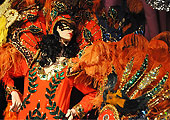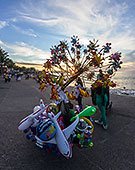 |
 |
|
 |

|
The Rosengart
Collection: It All Happened by Accident
Angela's father Siegfried passed away in 1985 after a lucrative career as one of Europe's most distinguished art dealers, based in Lucerne. Together, he and Angela ran the business for decades, often purchasing works for their own personal appreciation rather than for any intention of moving them as product. Being close friends with Pablo Picasso, Marc Chagall and several renowned artists, the Rosengarts amassed an unrivalled collection. They purchased pieces by their own subjective choice, for their own personal reasons. As dealers, they knew everyone from Miro to Matisse. The austere neoclassical building at Pilatusstrasse 10 formerly housed the Swiss National Bank, but the Rosengart Collection of over 300 works has occupied the building since 2002. At that time, Angela created a foundation to keep the works and make them available to the public. Angela hired the Basel-based architect Roger Diener to refurbish the building and make it suitable for a collection of classic modern works. Cosmetically, Diener retained the original structure of the building, but successfully converted it to a museum space with subtle lighting and wide spaces to enhance the viewer's experience of the artwork. Much of the original ornamentation remains. He wanted a simple look — nothing superfluous, nothing grandiose. "He understood painting and he was fond of old buildings," Angela tells me. Picasso was a friend of the family, so the entire ground floor features his works, mostly from the later decades. One moves through the work chronologically. For example, one gallery is primarily dedicated to the '50s, while the next covers the early '60s. There are many paintings of Picasso's various mistresses and he even painted Angela Rosengart herself.
Other rooms on another floor feature David Douglas Duncan's photographs of Picasso at work in his studio. A few depict scenes from October, 1963, with Angela sitting in a chair, as Picasso draws her.
"I had to sit there and endure the looks from his eyes,"Angela recalls. "The looks were like arrows."
All in all, one can feel the sheer vitality of Picasso's output emanating from the walls of Pilatusstrasse 10. It's like stepping into his very own studio. For example, as we turn a corner, Angela leads me into another room featuring some of Picasso's etchings from 1968. "He did something like 347 etchings that year," she explains. "He would complete one after the other." Exploring the three-floor building, guided by the benefactress herself, is downright inspiring. Tourists who show up ask the inevitable vacuous question: Which painting is your favorite? But she says there's no way to answer. It changes every day. In fact, with the utmost of humility, she won't even refer to the works as a collection. Instead, she repeats over and over that she "simply has beautiful pictures." Aside from Picasso, the beautiful pictures include works by Paul Klee, Matisse, Monet, Kandinsky, Leger, Braque, Seurat, Renoir, Cezanne and more. With even more humbleness, Angela reiterates that the entire collection happened by accident. There was never a plan.
Angela simply grew up with it all. At age 17, she purchased her first work, a piece from the Paul Klee estate. She paid fifty Swiss Francs, one month's salary at that time, for a piece titled Little X. The piece now adorns one wall in the museum.
Growing up, Angela never dreamed that Pablo Picasso would eventually draw her five times. He gave her the drawings and a few also hang in the collection. "I like to say I snuck into immortality through the back door," she tells me. I get the feeling she's said these lines many, many times before. But if I had received my own portraits directly from Picasso, I'd probably repeat myself a thousand times over. We then move into yet another room. Gracing one wall is the painting, Dancer II, by the Catalan master Joan Miro. "He was a friend too," she adds. Finally, we descend into the basement, formerly the vault of the Swiss National Bank, now split into separate rooms dedicated entirely to the Swiss artist Paul Klee. Over 100 of Klee's watercolors, drawings and paintings are hung chronologically, providing tremendous insight into the evolution of his various styles and themes. In the basement, the walls seem three feet thick. It cost $100,000 to break through one wall in order to divide up the space. The concrete floor is now covered with 100-year-old wood flooring that Diener discovered in an old home. The flooring gives the basement a homey feel. "It has a new life," Angela says. Angela is now pushing 80. Through her, I have experienced a living connection to some of the twentieth century's most illustrious artists. No matter what happens, she will live forever through this immaculate collection, forever inspiring those whose lives have unfolded by accident. Rosengart Collection
Related Articles: |
|
Your tea adventures are especially interesting because I've always associated tea with British etiquette or a bevy of women wearing dainty victorian costumes and sipping tea with their little pinky sticking out. To see Tea from a man's perspective brings new light in a man's psyche. I've been among the many silent admirers of your writings for a long time here at Traveling Boy. Thanks for your very interesting perspectives about your travels. Keep it up! --- Rodger, B. of Whittier, CA, USA
|
|
| ||||
|
| ||||
|
| ||||
This site is designed and maintained by WYNK Marketing. Send all technical issues to: support@wynkmarketing.com

|







